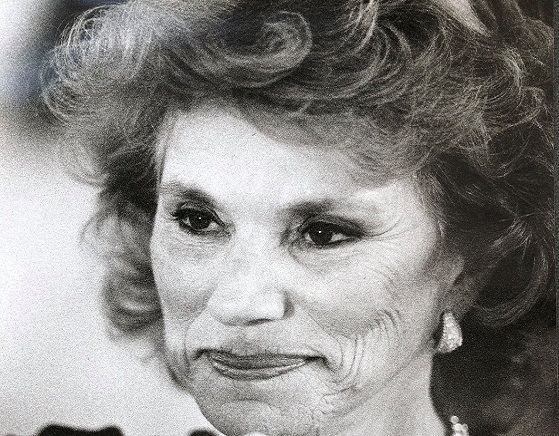Grieving the Loss of a Matriarch: Walking in Nan’s Shoes.
I felt like Bow Wow in the 2002 film Like Mike the first time I put on Nana’s sneakers after she passed.
Inheriting a departed loved one’s wardrobe is perhaps one of the most palpable expressions of grief. It is exactly the life-death-life cycle: to re-inhabit, re-claim, re-embody that which has been lost.
Clothes are often considered an extension of ourselves because they decorate our vehicles, our homes, our bodies. Wearing one’s clothing can amplify our sentiments and memories of them, as well as serve as a way to honor their legacy. In the same breath, there is nothing like a sentimental blazer to heighten our grief pangs for the one who’s no longer here to sport it.
To be the receiver of a late relative’s belongings is the most literal and complex translation of a hand-me-down. It’s a severely involuntary passing of batons from one generation to the next.
While most anything in life is possible, one of the few impossibilities is this: we can never, ever, ever truly understand another person’s experience. This is the beauty of human existence: we are made with our own, one-of-a-kind, state-of-the-art cellular expression and no one can take that away from us.
Being part of this magically divine, cosmic mystery is what makes families and intergenerational inheritances spectacular, in all their gore and glory.
As such, for centuries, there have been well-known proverbs articulating the significance of our human individuality. Mind Fuel Daily emphasizes that the original source of the phrase You can’t understand someone until you’ve walked a mile in their shoes is unknown, further representing its transcendent wisdom.
After walking miles in Nan’s shoes, I can assure you, I still can’t understand her. And I won’t. Not only because she was a complex woman, but because we are all multidimensional people. I would never presume to truly know her, I can only honor my attempts to, while accepting the greater mystery. Likely, part of big G Grief is a flooded embodiment of The Great Unknown.
Material possessions can certainly become a reminder of this, and life’s unanswerable questions can amplify the felt instability, uncertainty and sorrowful experience of the bereft. Death exacerbates the magnitude of that which we do not, and cannot, know.
Hence, things are comforting. They are real, tactile, and concrete, objects to hold on to in the midst of feeling their opposite. Nana’s possessions diminish some semblance of her absence while being amongst her represented presence. Especially for folks with complicated relationships to their departed, things left behind can take on an equally complicated, and therefore profound, meaning.
Historically, shoes have also been proven to be an effective and emotional tool used in campaigns, activist walks and museum exhibits to raise awareness on behalf of causes pertaining but not limited to Gun Violence, Suicide and Mental Health, the Danube Holocaust Memorial, Human Trafficking, and sadly, many more.
Considering shoes to be the nearest extension of how one walked through life, each pair obtains a specific characterization of its owner. Hence, understanding the phrase You’ve got big shoes to fill.
One of the most notorious six-word stories is best associated with Ernest Hemingway, though there remains speculation about this. Dating back to the early twentieth century, he presumably wrote, For sale, baby shoes, never worn. As one’s well-worn shoes can prompt visceral depths of loss, the same is evoked by Hemingway’s tragic story using shoes to depict a life never lived.
On both ends of the spectrum, shoes represent one’s unique, irreplaceable mark left in this world.
As I continue to use Nana’s dated, boxy kicks, I embody this full spectrum of historical relevance. I quite literally find myself attempting to retrace her steps and fuse with her athletic self on my hikes, seeking ancestral wisdom. I think of her often as I work to gain footing in my own life.
I remain curious about how she continues to illuminate our paths from the non-physical realm whilst observing my felt responsibility to carry her torch here in the physical. I am to walk my own walk while integrating hers too. We always had the same shoe size.
As author and esteemed herbalist Stephen Buhner writes in his book, The Secret Teachings of Plants: The Intelligence of the Heart in the Direct Perception of Nature, There is one place in all the Universe that has been made just for you. And it is inside your own feet. The symbolism of shoes will live on as a means of understanding, as an extension of the person connected to those feet.
I miss experiencing what Nana stood for, literally and figuratively. I miss walking alongside her arm-in-arm, linked at the hip. She was the matriarch of the family. As her granddaughter, she was my personal matriarch. Losing her was like losing a pillar, the pinnacle of the family tree, the thing that kept the holistic system upright and standing. No one can replace her footprint in my family or in my life.
Regardless of one’s character, this impossibility is to be humbly honored and respected.
As explained by TheMindsJournal, A female fetus is born with all the eggs she will ever have in her lifetime. So when your Grandmother was carrying your Mother in her womb, you were a tiny egg in your Mother’s ovaries. The three of you have been connected for a very long time. No wonder part of me felt like I died when she did.
As is always true, however, what follows the fall of a queen is the rise of a different royal expression. A stepping up and stepping in. A reconfiguration. A reconstruction of the whole. Even if I can’t understand it all, there is great purpose here, tending to familial realignment, one step at a time.
***
Paige Frisone is a body-based writing coach, writer and poet stationed in Boulder, Colorado. Originally from Chicago, her writing pursuits began at Butler University, finishing school at Naropa University with an integrated contemplative psychology focus. Her work has been featured in The Mighty, Elephant Journal, AboutBoulder, Rogue Agent, Entropy’s Enclave, and elsewhere. Learn more about her psychosomatic inquiries at her website.



